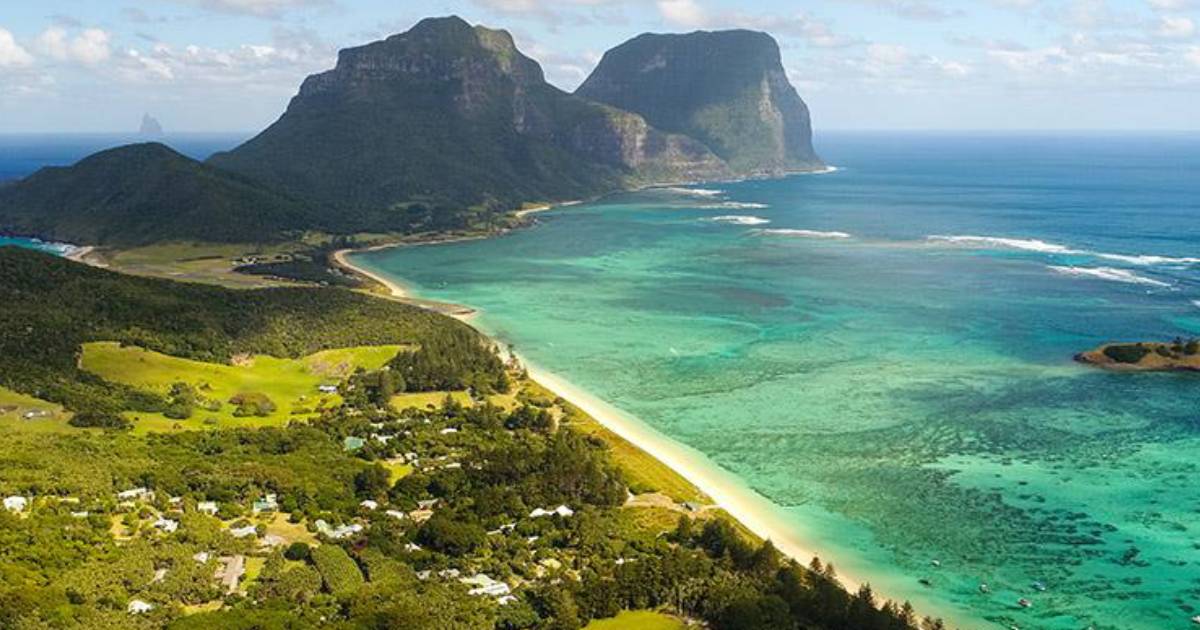
More than seven years after the project was originally announced, Lord Howe Island’s completed Hybrid Renewable Energy Project has been handed over to the Island’s Board.
Lord Howe Island is a tiny place – just 14.55km² – situated around 580 kilometres east of Port Macquarie. It’s a part of New South Wales and while small in land area, the island boasts incredible biodiversity. It’s also home to a human population of approximately 380, and only 400 visitors are allowed on the island at any given time.
Mains electricity supply was previously totally fossil fuel based – 3 x 300kW MTU Detroit Series 60 diesel generating units plus a 425 kW MTU Detroit Series 70 unit for backup. There were/are also some privately owned solar systems on Lord Howe Island.
The island’s electricity generation profile didn’t really complement its UNESCO World Heritage status.
Plans were announced in 2014 to displace up to 70 per cent of the diesel generation with renewables. The system was originally to be comprised of 450kW of solar panels, 550kW of wind power and 400kw/400kWh of battery storage, plus the microgrid tech smarts to accompany them.
The Australian Renewable Energy Agency (ARENA) kicked in $4.5 million for the $11.6 million hybrid renewable energy project. The Lord Howe Island Board; responsible for care, control and management of the island, secured a NSW Government loan of $5.9 million.
Wind Power Dumped For More Solar Energy
Tenders weren’t called until 2016 and then in 2017, Federal Minister for Energy at the time Josh Frydenberg decided the wind turbine component of the project couldn’t proceed due to impacts on the ‘visual landscape” of Lord Howe Island.
So, it was back to the drawing board for some re-jiggering of the plans. In 2019, ARENA announced a new arrangement of at least 1.2MW of solar power and a 3.2MWh battery system, with Photon Energy scoring the guernsey to construct it.
With that all settled, Photon hooked in, starting construction in February 2020 and completing the project in April this year. The final configuration is 1.3 MW of solar capacity (3,240 solar panels) and a 3.7 MWh Tesla Powerpack battery system.
So, 6 years of organising the project, followed by just 14 months once construction boots were on the ground to get it cranking clean electricity. But all’s well that ends well.
It’s expected the system will reduce diesel use by 67%, avoiding the consumption of around 360,000 litres of the fossil fuel each year. Photon notes there were stretches of up to five consecutive days and nights in August without any additional diesel-generated power being required.
You can see how the hybrid microgrid is performing using this spiffy real time generation dashboard that provides live snapshots of the renewable energy system in action. Folks on the island can also see dashboards outside the post office and inside the museum.
Photon Energy handed over the reins of the system to the Lord Howe Island Board last week.
‘We are very pleased with the success of this project for the Lord Howe Island community,” said Photon’s Michael Gartner. “The experience we have gained through the delivery of the project demonstrates that solar power and energy storage not only reduce emissions and other environmental risks but are instrumental in ensuring energy security.”
Acting CEO of the Board Mick Pettitt said the outcomes of the project have been fantastic – and without detracting from the World Heritage values of the Island.

 RSS - Posts
RSS - Posts



Started reading this article, got to the point where wind power was intended to provide 55% of power and instantly thought ugh!!!
Does anyone think wind turbines fit into a ‘UNESCO World Heritage’ area?
Fortunately Frydenberg put the kybosh on that idea so the island will remain a paradise – assuming the photo does it justice.
Interesting to see a microgrid in action though, and to see how power can be provided to isolated settlements.
‘Boutique’ type solutions can be where Solar PV can be extremely useful..
The Antarctica research base saved huge amounts on overall diesel fuel costs, associated with have to transport it across ice etc and then inland a bit.
Because of less storage space needed on ship for fuel, could also then fit in more scientific equipment, spare parts, carry out more experiments because room available to fit in the needed extra scientific gear, more food supplies for personnel, have more people occupying the research base, a whole host of very beneficial flow-on effects